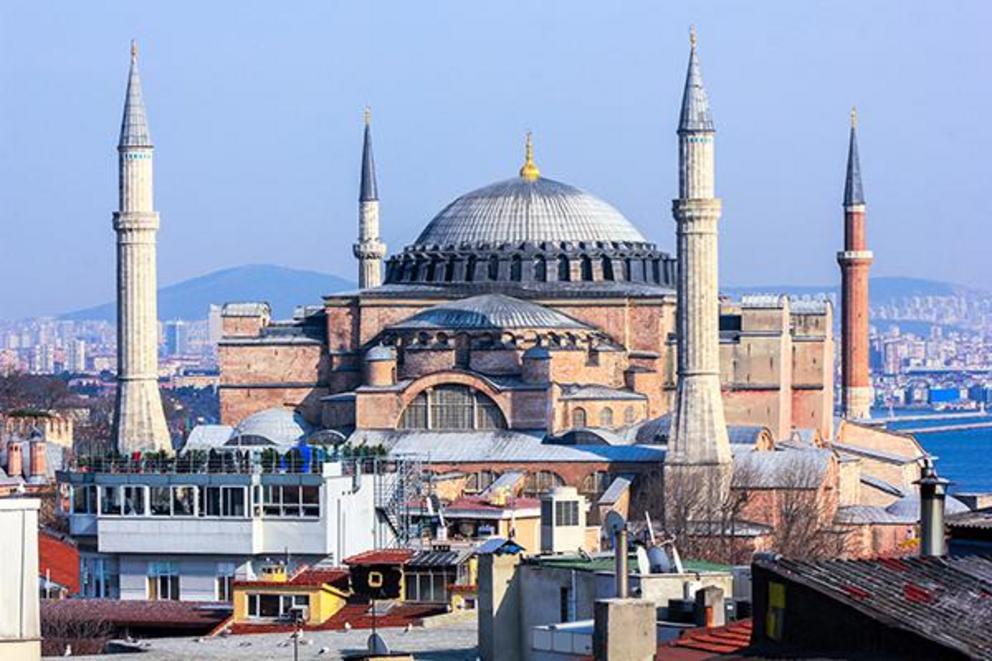Archaeologists unlock even more secrets at the largest cathedral in the ancient world
The world’s largest Christian cathedral recently yielded many of its secrets after years of investigation. Researchers uncovered hidden and forgotten structures in the Hagia Sophia, including the Great Baptistery of the Byzantine Emperors.
The Hagia Sophia means “Great Wisdom” in Greek, the lingua franca of the Byzantine Empire. It stands in Istanbul, Turkey, which used to be the Byzantine capital city of Constantinople.
Its predecessor basilica got torched to the ground by rioters in 532 A.D. Byzantine Emperor Justinian I ordered the construction of a massive cathedral that kept the name of the old structure.
The new Hagia Sophia finished construction in 537 A.D. The cathedral’s distinct dome rose 180 feet (55 m) into the air.
Nearly 900 years later, the Ottoman Empire stormed Constantinople. They renamed the city to Istanbul and converted the Hagia Sophia into a mosque. In 1935, the Turkish government turned it into a museum.
A team led by Ken Dark and Jan Kostenec investigated the Hagia Sophia from 2004 to 2018. The researchers found both missing and unknown structures and put together a reconstruction of its Patriarchal Palace.
They even found the exact spot where the Byzantine emperor stood during religious ceremonies.
Researchers rediscover many lost structures in the Hagia Sophia
In their recently published book, Dark and Kostenec investigated the area around the Hagia Sophia. They found evidence of previously unknown Byzantine structures to the north, west, and south of the cathedral.
To start with, they discovered the remains of the courtyard that formerly surrounded the basilica. The structure consisted of white marble and dated back to the 6th century.
Beneath the large hall of the basilica, the researchers found what appeared to be a library. During its heyday, it would have stored thousands of scrolls on diverse subjects.
The courtyard, library, and many other structures reemerged after the partial restoration of the Hagia Sophia. Museum officials removed some of the plaster that covered the cathedral’s architectural features from ancient and medieval times.
During their research, Dark and Kostenec learned that the northwest vestibule was part of the original basilica commissioned by Justinian I. Earlier scholarship erroneously attributed the structure to the Ottomans.
“Recognizing that the northwest vestibule was part of the Justinianic church means that all previous plans of Hagia Sophia are incomplete and their use should cease for scholarly purposes,” explained the researchers. “The discovery of such a large ‘new’ part of Justinian’s church of Hagia Sophia is unprecedented in recent decades … and alters significantly the known plan of that world-famous building.”
The world’s biggest cathedral was once clad in white marble
The crown jewel of their discoveries appeared in the northeast vestibule. Dark and Kostenec found a circular spot made from porphyry, a rare purple-colored igneous rock reserved for Late Roman Emperors and their Byzantine successors.
The porphyry disc was part of the original floor laid down during the 6th century. It might have marked the spot where Justinian and his successor emperors stood during the liturgies held in the Hagia Sophia.
In addition to the porphyry spot, the researchers also found more remnants of white marble slabs. They theorized that the material might have made up more of the external structure than previously believed.
Later centuries saw the Hagia Sophia covered in red brick and painted plaster. The original marble-clad basilica must have looked very different.
“Covering the area around the church and its exterior walls with white marble slabs will have reflected light both onto the building from its surroundings and off its walls, enhancing visibility from a distance and in bright sunlight, creating an almost luminous quality,” remarked the researchers.
For full references please use source link below.

